Northeast
9 juveniles who escaped Pennsylvania detention center after overpowering guards now captured, state police say
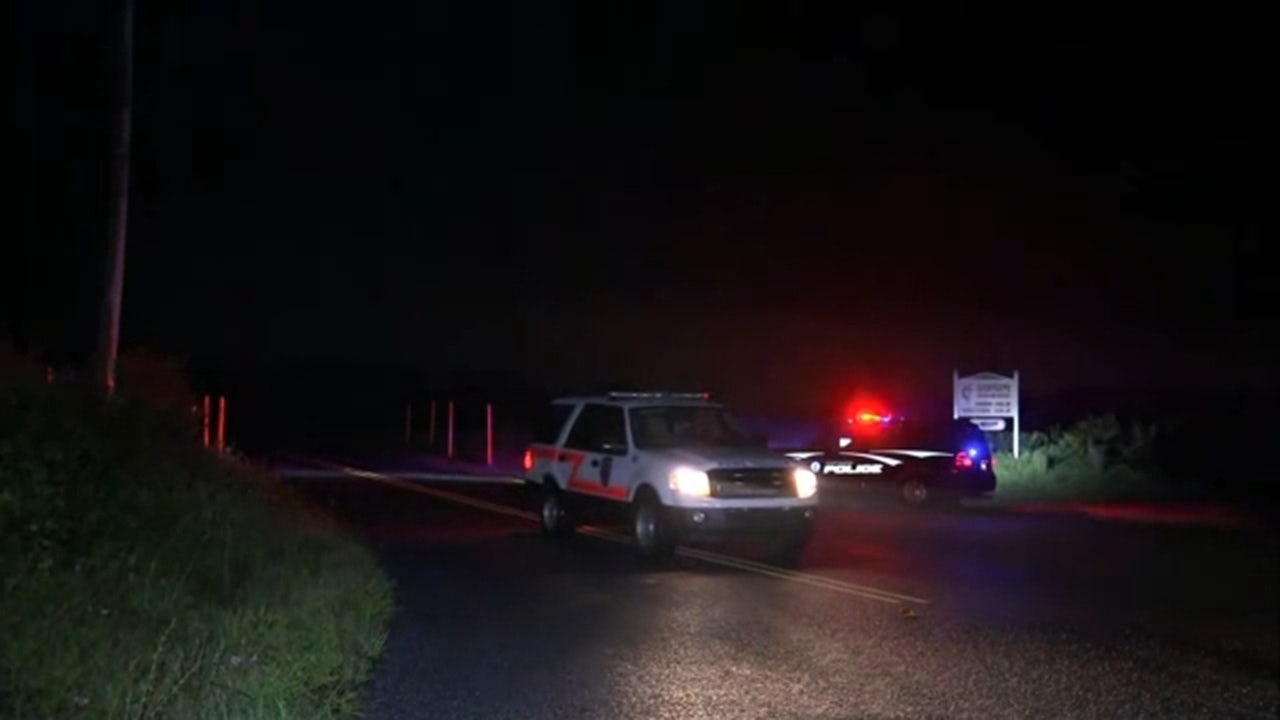
All nine juveniles who escaped a Pennsylvania detention facility after allegedly overpowering two female guards have since been captured, state police announced Monday morning.
“We’re going to interview all nine of them,” Pennsylvania State Police Trooper David Beohm said at a news conference. “I know there’s stuff in the works right now to decide where they are going to go after that takes place.”
The update comes after Pennsylvania State Police said on X, formerly known as Twitter, earlier Monday that four of the nine had been taken into custody.
The juveniles had escaped from Abraxas Academy at around 8:00 p.m. on Sunday. Despite initial reports of a riot, Beohm said the nine juveniles worked together to overpower two female guards and take their keys. He clarified that there was no riot, saying just the nine male escapees were involved.
BRAZILIAN PROSECUTOR BELIEVED DANELO CAVALCANTE ESCAPED PENNSYLVANIA PRISON TO FACE CHARGE IN ‘LENIENT’ BRAZIL
Nine juveniles escaped Abraxas Academy on Sunday during a riot, police said. (Google Maps)
Beohm said the first four apprehended were taken into custody at about 5:45 a.m. on Oak Grove Road. He said the four juveniles banged on the door of a home there saying they “were done, they were tired, they were cold,” and authorities came to apprehend them.
At 6:36 a.m., there was a report of a stolen vehicle from a trailer also on Oak Grove Road. Authorities already nearby got into a minor pursuit and stopped the vehicle. Four were taken into custody from the pick-up truck, while a fifth “took off in the field and was taken into custody shortly thereafter,” Beohm told reporters.
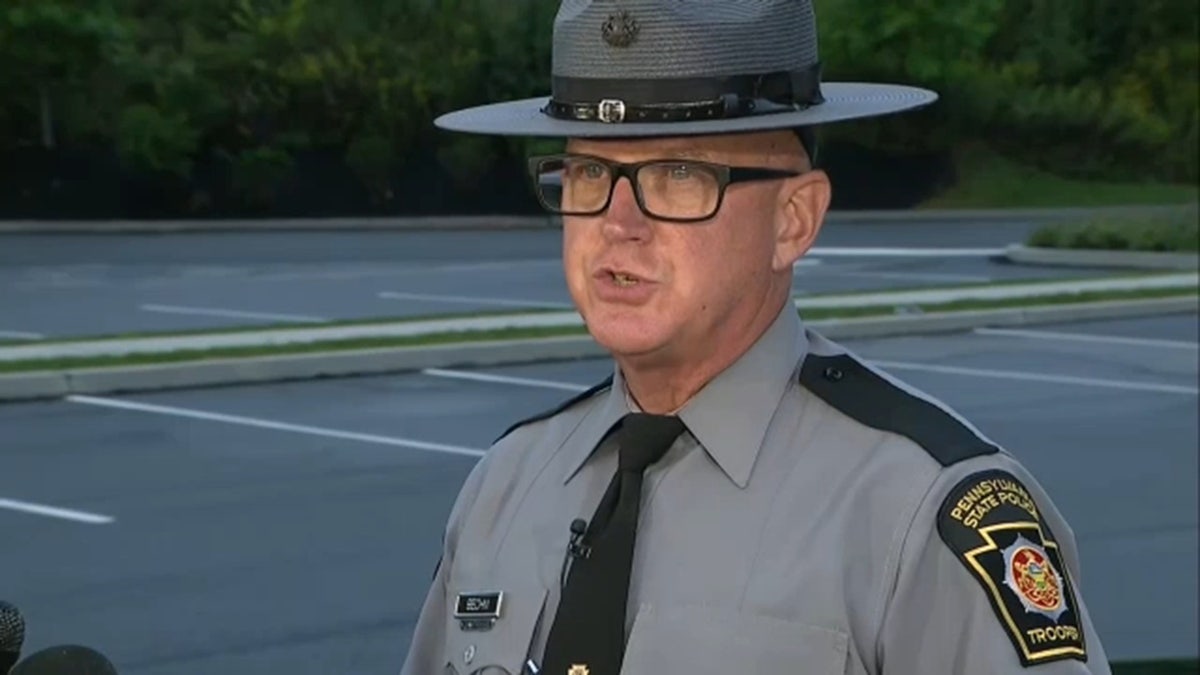
Pennsylvania State Police Trooper David Beohm provides a 7:30 a.m. update Monday saying all nine juvenile escapees have been captured. (WFXT)
“They will all be charged with escape,” Beohm said, adding that additional charges were expected, including potentially criminal mischief for allegedly breaking a car window on Estate Drive in an attempt the steal the vehicle while still on the run. All nine were captured about four miles from the detention center.
State and local police were called late Sunday to take control of the juvenile center in Morgantown, about 49 miles northwest of Philadelphia, after initial reports of a riot beginning inside the facility, the Caernarvon Township Police Department said earlier.
CONVICTED KILLER DANELO CAVALCANTE CAPTURED IN PENNSYLVANIA NEARLY 2 WEEKS AFTER PRISON ESCAPE
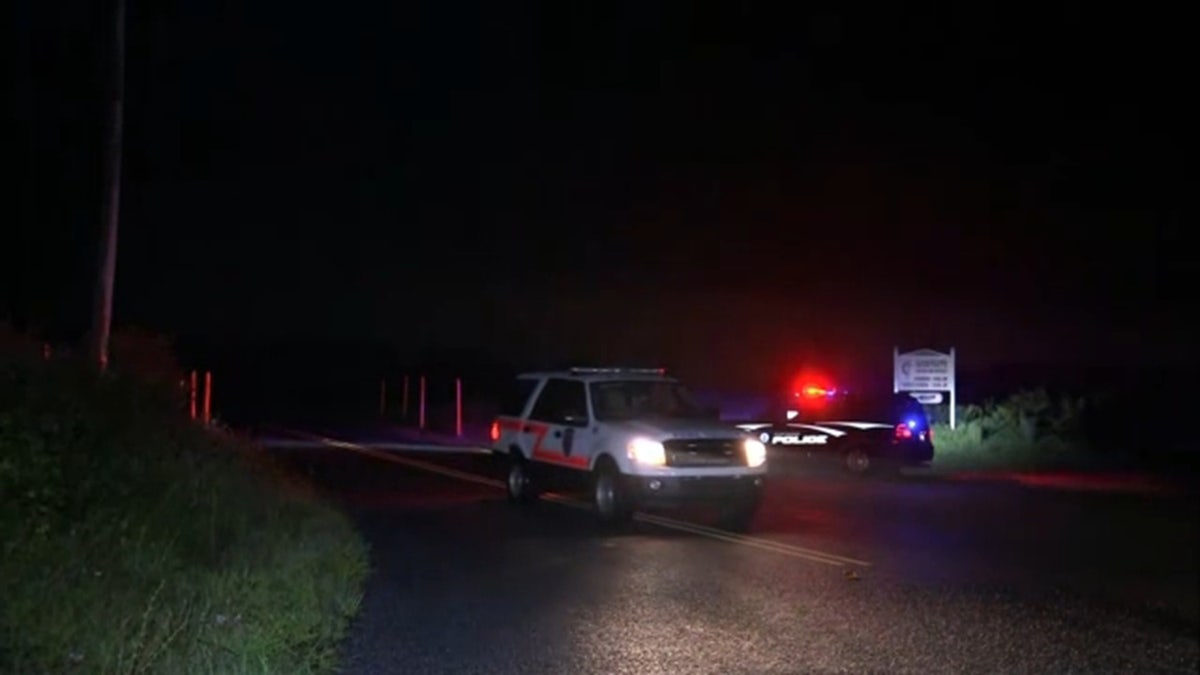
Nine juveniles escaped Sunday from the Abraxas Academy in Morgantown, Pa. (KYW via NNS)
Abraxas Academy is a secure residential treatment program providing “specialized care for delinquent male youth between the ages of 14 to 18 in 9th grade or above,” according to the facility’s website.
Beohm said he had personally seen two of the escapees after their capture.
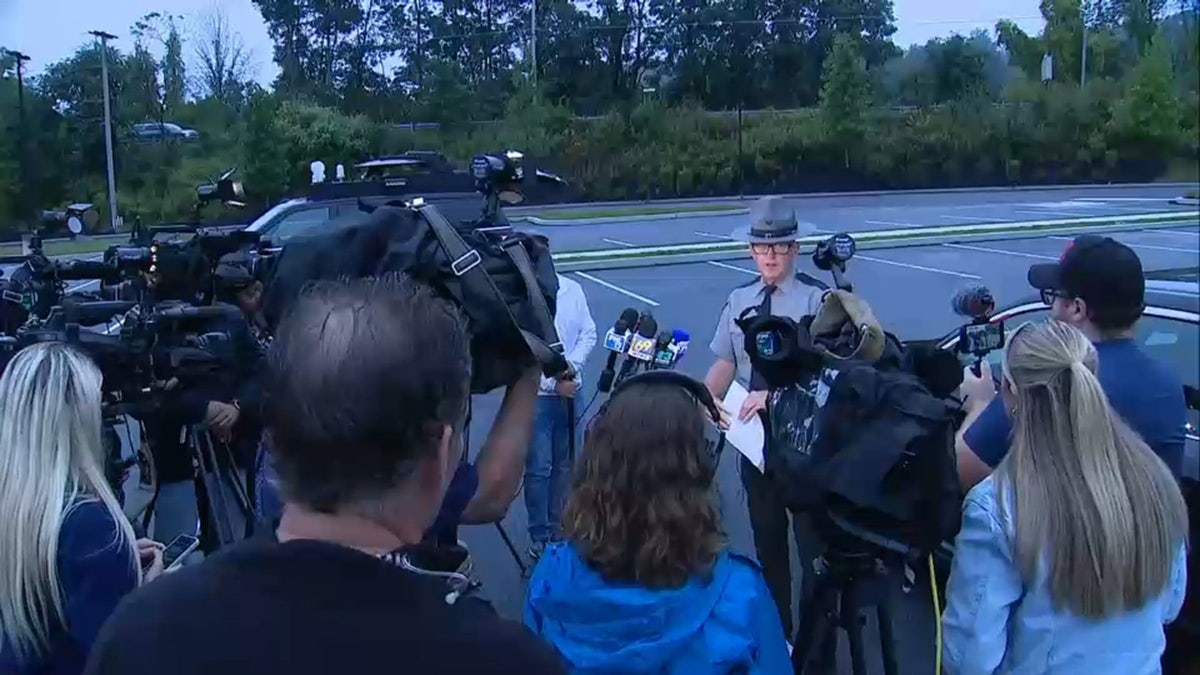
Pennsylvania State Police Trooper David Beohm speaks to reporters after nine juveniles who escaped from Abraxas Academy were recaptured Monday. (WFXT)
“They were really dirty looking and look like they have probably been out walking in the woods since eight o’clock last night,” Beohm said.
The Twin Valley School District closed all schools and offices Monday, as well as after-school and evening activities, including a scheduled school board meeting, newspaper Reading Eagle reported.
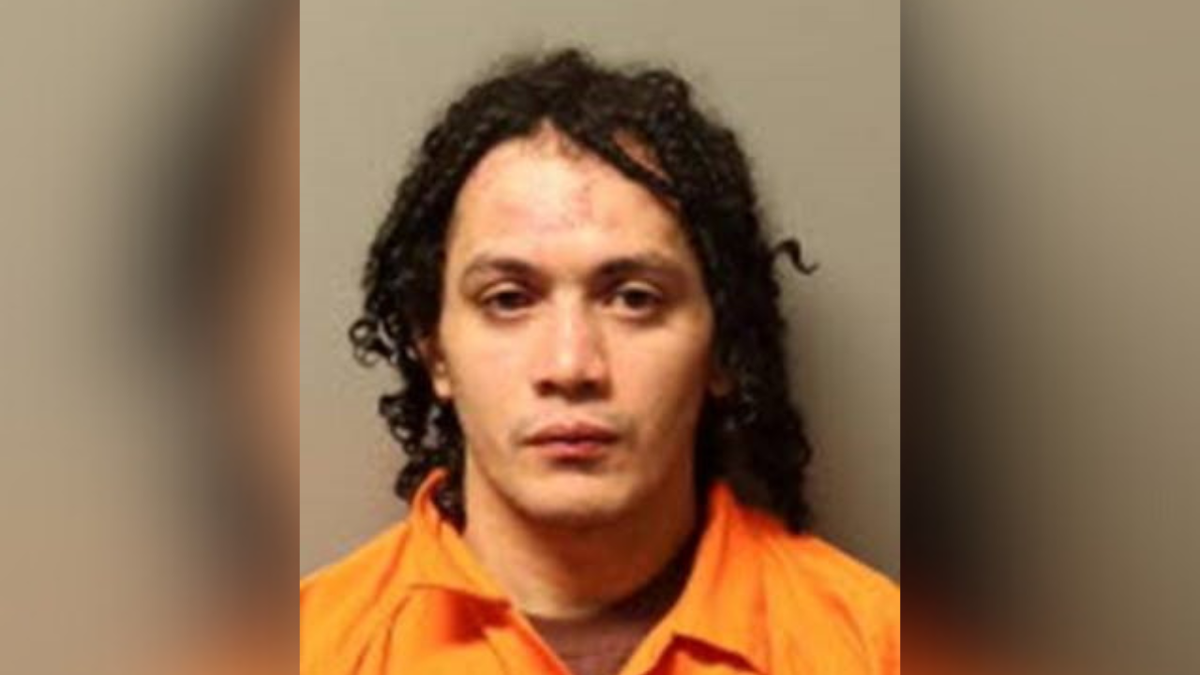
Officials in Pennsylvania released the mugshot for convicted killer Danelo Cavalcante after he was captured on Wednesday morning, nearly two weeks after he escaped from Chester County Prison. (Pennsylvania Department of Corrections )
The escape came shortly after the capture of Danelo Cavalcante, a convicted murderer who broke out of prison and eluded Pennsylvania authorities for nearly two weeks despite an extended manhunt. Cavalcante escaped from the Chester County Jail on Aug. 31 by scaling a wall topped with razor wire and jumping from the roof, authorities said.
CLICK TO GET THE FOX NEWS APP
Cavalcante fled Brazil in 2018 a few months after allegedly fatally shooting a man who owed him money and was later sentenced to life in prison in the U.S. for killing his girlfriend in 2021.
The Associated Press contributed to this report.
Read the full article from Here

Pennsylvania
Group weighs potential and peril of performance funding for Pa. universities • Pennsylvania Capital-Star

A group of lawmakers, university administrators and the head of the Department of Education heard Tuesday about the possibilities — and perils — of tying public funding of state-related universities at least in part to their performance and students’ academic outcomes.
The Performance-Based Funding Council was created by the General Assembly last summer and tasked with making recommendations on a performance-based funding formula by the end of April. Members include four lawmakers, Interim Acting Secretary of Education Angela Fitterer and three non-voting members from the state-related schools that would be affected: Penn State, Temple University and the University of Pittsburgh. Lincoln University, an HBCU and a fourth state-related university, would not be affected.
Currently, the three state-related schools collectively receive more than $550 million in state funding annually. The move to a performance-based funding formula has been supported by lawmakers from both parties, as well as Gov. Josh Shapiro.
“These legislative hearings offer a unique opportunity to fundamentally reassess how we align public resources and educational outcomes,” said Rep. Jesse Topper (R-Bedford), the council chairperson. “I believe we need to show the public how those resources are used and why — why we invest in higher education.”
More than 30 states already use a performance-based funding model. According to testimony heard by the council, the most common academic targets in states with performance-based funding models include graduation rates, student retention and degree or credential completion. But a potential formula could also take into account factors like research output, administrative efficiency, and employment rates of graduated students.
While policies vary greatly around the country, about 10% of money sent to four-year schools in states with performance-based funding formulas is based on the targeted metrics, according to testimony by Andrew Smalley, a policy specialist who focuses on higher education at the National Conference of State Legislatures.
But experts warned that coming up with a comprehensive formula can be “daunting.”
“Everyone knows that colleges and universities subject to these formulas find themselves in a bit of a Catch-22,” said Charles Ansell, vice president of research, policy and advocacy at Complete College America, a nonprofit focused on best practices in higher education. “They need funds for their performance and improved graduation rates, but they cannot access funds without demonstrating improvement first.”
One potential solution, another expert testified, could be awarding funds based on improvements at an individual school over time instead of an arbitrary benchmark, like graduation rate, that applies to all schools.
Experts also warned that some performance-based funding models can exacerbate disparities in educational outcomes between high- and low-income students, and between white and minority students.
“Performance funding is typically tied to advantages for the advantaged students and disadvantages for the disadvantaged,” said Justin Ortagus, an associate professor of higher education administration and policy at the University of Florida. Though he noted that a funding formula can take these pitfalls into account by incentivizing enrollment and degree or certification attainment for students in impacted groups.
Speakers also highlighted the benefits of performance-based funding models. Ortagus noted that they can promote institutional accountability.
It could also provide predictability when it comes to school budgets.
As it stands, Pennsylvania’s method for funding these universities requires a two-thirds vote of the legislature, which has led to months-long delays in the past. Creating a predictable funding formula that would be distributed through the Department of Education would mean future appropriations would only require a simple majority.
Moreover, lawmakers could use performance metrics to encourage specific educational outcomes. Part of the funding formula, for example, could rely on students enrolling or graduating in programs of study that would lead to them entering high-demand fields in the job market.
The state could also target specific outcomes based on goals like increasing low-income, veteran or minority student graduation rates, encouraging adult education and incentivizing students to enter high-demand jobs by focusing on particular majors. And the formula can be adapted when new needs or issues arise.
“It’s very common for states to revise these frequently,” Smalley said.
The council expects to hold three more hearings, some at the campuses of affected state-related universities. Its recommendations are due to the legislature and governor April 30.
Rhode Island
RI Lottery Mega Millions, Lucky For Life winning numbers for Jan. 14, 2025
The Rhode Island Lottery offers multiple draw games for those aiming to win big. Here’s a look at Jan. 14, 2025, results for each game:
Winning Mega Millions numbers from Jan. 14 drawing
04-14-35-49-62, Mega Ball: 06, Megaplier: 3
Check Mega Millions payouts and previous drawings here.
Winning Lucky For Life numbers from Jan. 14 drawing
03-06-17-26-39, Lucky Ball: 04
Check Lucky For Life payouts and previous drawings here.
Winning Numbers numbers from Jan. 14 drawing
Midday: 0-8-1-0
Evening: 1-9-8-6
Check Numbers payouts and previous drawings here.
Winning Wild Money numbers from Jan. 14 drawing
12-17-28-30-36, Extra: 06
Check Wild Money payouts and previous drawings here.
Feeling lucky? Explore the latest lottery news & results
Are you a winner? Here’s how to claim your prize
- Prizes less than $600 can be claimed at any Rhode Island Lottery Retailer. Prizes of $600 and above must be claimed at Lottery Headquarters, 1425 Pontiac Ave., Cranston, Rhode Island 02920.
- Mega Millions and Powerball jackpot winners can decide on cash or annuity payment within 60 days after becoming entitled to the prize. The annuitized prize shall be paid in 30 graduated annual installments.
- Winners of the Lucky for Life top prize of $1,000 a day for life and second prize of $25,000 a year for life can decide to collect the prize for a minimum of 20 years or take a lump sum cash payment.
When are the Rhode Island Lottery drawings held?
- Powerball: 10:59 p.m. ET on Monday, Wednesday, and Saturday.
- Mega Millions: 11:00 p.m. ET on Tuesday and Friday.
- Lucky for Life: 10:30 p.m. ET daily.
- Numbers (Midday): 1:30 p.m. ET daily.
- Numbers (Evening): 7:29 p.m. ET daily.
- Wild Money: 7:29 p.m. ET on Tuesday, Thursday and Saturday.
This results page was generated automatically using information from TinBu and a template written and reviewed by a Rhode Island editor. You can send feedback using this form.
Vermont
Tom Salmon, governor behind ‘the biggest political upset in Vermont history,’ dies at 92 – VTDigger

When Vermont Democrats lacked a gubernatorial candidate the afternoon of the primary deadline in August 1972, Rockingham lawyer Tom Salmon, in the most last-minute of Hail Mary passes, threw his hat in the ring.
“There could be a whale of a big surprise,” Salmon was quoted as saying by skeptical reporters who knew the former local legislator had been soundly beached in his first try for state office two years earlier.
Then a Moby Dick of a shock came on Election Day, spurring the Burlington Free Press to deem Salmon’s Nov. 7, 1972, victory over the now late Republican businessman Luther “Fred” Hackett “the biggest political upset in Vermont history.”
Salmon, who served two terms as governor, continued to defy the odds in subsequent decades, be it by overcoming a losing 1976 U.S. Senate bid to become president of the University of Vermont, or by entering a Brattleboro convalescent home in 2022, only to confound doctors by living nearly three more years until his death Tuesday.
Salmon, surrounded by family, died just before sundown at the Pine Heights Center for Nursing and Rehabilitation at age 92, his children announced shortly after.
“Your man Winston Churchill always said, ‘Never, never, never, never give up,” Salmon’s son, former state Auditor Thomas M. Salmon, recalled telling his father in his last days, “and Dad, you’ve demonstrated that.”
Born in the Midwest and raised in Massachusetts, Thomas P. Salmon graduated from Boston College Law School before moving to Rockingham in 1958 to work as an attorney, a municipal judge from 1963 to 1965, and a state representative from 1965 to 1971.
Salmon capped his legislative tenure as House minority leader. But his political career hit a wall in 1970 when he lost a race for attorney general by 17 points to incumbent Jim Jeffords, the now late maverick Republican who’d go on to serve in the U.S. House and Senate before his seismic 2001 party switch.

Vermont had made national news in 1962 when the now late Philip Hoff became the first Democrat to win popular election as governor since the founding of the Republican Party in 1854. But the GOP had a vise-grip on the rest of the ballot, held two-thirds of all seats in the Legislature and took back the executive chamber when the now deceased insurance executive Deane Davis won after Hoff stepped down in 1968.
As Republican President Richard Nixon campaigned for reelection in 1972, Democrats were split over whether to support former Vice President Hubert Humphrey or U.S. senators George McGovern or Edmund Muskie. The Vermont party was so divided, it couldn’t field a full slate of aspirants to run for state office.
“The reason that we can’t get candidates this year is that people don’t want to get caught in the struggle,” Hoff told reporters at the time. “The right kind of Democrat could have a good chance for the governorship this year, but we have yet to see him.”
Enter Salmon. Two years after his trouncing, he had every reason not to run again. Then he attended the Miami presidential convention that nominated McGovern.
“I listened to the leadership of the Democratic Party committed to tilting at windmills against what seemed to be the almost certain reelection of President Nixon,” Salmon recalled in a 1989 PBS interview with journalist Chris Graff. “That very night I made up my mind I was going to make the effort despite the odds.”

Before Vermont moved its primaries to August in 2010, party voting took place in September. That’s why Salmon could wait until hours before the Aug. 2, 1972, filing deadline to place his name on the ballot.
“Most Democratic leaders conceded that Salmon’s chances of nailing down the state’s top job are quite dim,” wrote the Rutland Herald and Times Argus, reporting that Salmon was favored by no more than 18% of those surveyed.
(Gov. Davis’ preferred successor, Hackett, was the front-runner. A then-unknown Liberty Union Party candidate — Bernie Sanders — rounded out the race.)
“We agreed that there was no chance of our winning the election unless the campaign stood for something,” Salmon said in his 1989 PBS interview. “Namely, addressed real issues that people in Vermont cared about.”
Salmon proposed to support average residents by reforming the property tax and restricting unplanned development, offering the motto “Vermont is not for sale.” In contrast, his Republican opponent called for repealing the state’s then-new litter-decreasing bottle-deposit law, while a Rutland County representative to the GOP’s National Committee, Roland Seward, told reporters, “What are we saving the environment for, the animals?”
As Republicans crowded into a Montpelier ballroom on election night, Salmon stayed home in the Rockingham village of Bellows Falls — the better to watch his then 9-year-old namesake son join a dozen friends in breaking a garage window during an impromptu football game, the press would report.
At 10:20 p.m., CBS news anchor Walter Cronkite interrupted news of a Nixon landslide to announce, “It looks like there’s an upset in the making in Vermont.”
The Rutland Herald and Times Argus summed up Salmon’s “winning combination” (he scored 56% of the vote) as “the image of an underdog fighting ‘the machine’” and “an appeal to the pocketbook on taxes and electric power.”
Outgoing Gov. Davis would later write in his autobiography that the Democrat was “an extremely intelligent, articulate, handsome individual with loads of charm.”
“Salmon accepted a challenge which several other Democrats had turned down,” the Free Press added in an unusual front-page editorial of congratulations. “He then accomplished what almost all observers saw as a virtual impossibility.”

As governor, Salmon pushed for the prohibition of phosphates in state waters and the formation of the Agency of Transportation. Stepping down after four years to run for U.S. Senate in 1976, he was defeated by incumbent Republican Robert Stafford, the now late namesake of the Stafford federal guaranteed student loan program.
Salmon went on to serve as president of the University of Vermont and chair of the board of Green Mountain Power. In his 1977 gubernatorial farewell address, he summed up his challenges — and said he had no regrets.
“A friend asked me the other day if it was all worth it,” Salmon said. “Wasn’t I owed more than I received with the energy crisis, Watergate, inflation, recession, natural disasters, no money, no snow, a tax revolt, and the anxiety of our people over government’s capacity to respond to their needs? My answer was this: I came to this state in 1958 with barely enough money in my pocket to pay for an overnight room. In 14 short years I became governor. The people of Vermont owe me nothing. I owe them everything for the privilege of serving two terms in the highest office Vermont can confer on one of its citizens.”
-

 Health1 week ago
Health1 week agoOzempic ‘microdosing’ is the new weight-loss trend: Should you try it?
-
/cdn.vox-cdn.com/uploads/chorus_asset/file/25822586/STK169_ZUCKERBERG_MAGA_STKS491_CVIRGINIA_A.jpg)
/cdn.vox-cdn.com/uploads/chorus_asset/file/25822586/STK169_ZUCKERBERG_MAGA_STKS491_CVIRGINIA_A.jpg) Technology6 days ago
Technology6 days agoMeta is highlighting a splintering global approach to online speech
-

 Science3 days ago
Science3 days agoMetro will offer free rides in L.A. through Sunday due to fires
-
/cdn.vox-cdn.com/uploads/chorus_asset/file/25821992/videoframe_720397.png)
/cdn.vox-cdn.com/uploads/chorus_asset/file/25821992/videoframe_720397.png) Technology1 week ago
Technology1 week agoLas Vegas police release ChatGPT logs from the suspect in the Cybertruck explosion
-

 Movie Reviews1 week ago
Movie Reviews1 week ago‘How to Make Millions Before Grandma Dies’ Review: Thai Oscar Entry Is a Disarmingly Sentimental Tear-Jerker
-

 Health1 week ago
Health1 week agoMichael J. Fox honored with Presidential Medal of Freedom for Parkinson’s research efforts
-

 Movie Reviews1 week ago
Movie Reviews1 week agoMovie Review: Millennials try to buy-in or opt-out of the “American Meltdown”
-

 News1 week ago
News1 week agoPhotos: Pacific Palisades Wildfire Engulfs Homes in an L.A. Neighborhood












